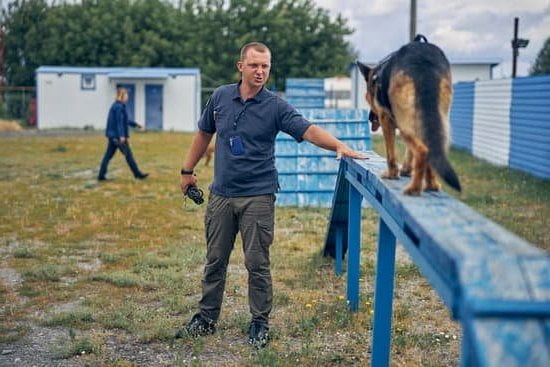Are you wondering how to train your dog to walk off-leash? Off-leash walking offers numerous benefits for dogs, allowing them to explore and exercise freely while building their confidence and social skills. However, it’s crucial to understand the importance of proper training to ensure safety and control. In this article, we will discuss the key steps and techniques for successfully training your dog to walk off-leash.
The first step in off-leash training is assessing your dog’s readiness. Recognizing the signs that indicate your dog is ready for off-leash walks, evaluating their obedience and behavior, and establishing a solid recall command are essential aspects of the training process. Additionally, creating a safe environment, gradual transition to off-leash walking, and utilizing long lines and training aids are all important considerations when embarking on off-leash training.
This comprehensive guide will provide you with practical tips and strategies for effectively training your dog to walk off-leash, emphasizing the importance of consistency and ongoing training. Troubleshooting common challenges that may arise during the training process will also be addressed. By understanding the benefits of off-leash walking and implementing proper training techniques, both you and your furry companion can enjoy the freedom and joy of exploring together without the confines of a leash.
Assessing Your Dog’s Readiness
Before embarking on the journey of off-leash training for your dog, it is crucial to assess their readiness and evaluate their obedience and behavior. One of the key indicators that your dog may be ready for off-leash walking is their responsiveness to basic commands such as “sit,” “stay,” and “come.” If they consistently obey these commands in different environments and situations, it is a positive sign that they are ready for more advanced off-leash training.
Another important factor to consider is your dog’s level of distraction and impulse control. If your dog exhibits high levels of focus and self-control, especially when faced with tempting distractions such as other animals or food, they may be ready for off-leash walking. Additionally, observing how your dog interacts with other dogs and people can provide insight into their social behavior and ability to navigate off-leash environments safely.
Evaluating your dog’s behavior in various settings, both indoors and outdoors, can also help determine their readiness for off-leash walking. Pay attention to how they respond to changes in their environment, unfamiliar sounds, and unexpected stimuli.
If they demonstrate adaptability, confidence, and a general sense of calmness in different environments, it may indicate that they are prepared for the freedom of walking off-leash. Understanding these signs will guide you in determining whether your dog is ready for off-leash training and help set realistic expectations for the process of transitioning from on-leash to off-leash walks.
Additionally, considering enrolling in a professional training program or seeking guidance from experienced trainers can provide valuable insights on how to train a dog to walk off leash effectively. Working with professionals can offer personalized support tailored to your specific needs and challenges during the training process.
Recognizing the signs of readiness in your dog plays a central role in creating a successful transition to off-leash walking while ensuring safety, control, and an enjoyable experience for both you and your canine companion.
Establishing a Solid Recall Command
Understanding the Importance of Recall
The recall command is perhaps the most crucial skill to teach your dog when training them to walk off-leash. This command not only ensures their safety but also provides you with the peace of mind that your dog will come back to you when called, even in potentially distracting or dangerous situations. Whether it’s at the park, on a hike, or simply in your own backyard, having a reliable recall is essential for off-leash walking.
Step-by-Step Training Process
To begin training your dog for a solid recall command, start by using a long leash and working in an enclosed area with minimal distractions. Use a positive and enthusiastic tone of voice when calling your dog’s name followed by the “come” command. When they respond and come to you, reward them with treats, verbal praise, and physical affection. Repeat this process consistently, gradually increasing the distance between you and your dog.
As your dog becomes more responsive to the recall command in controlled environments, start practicing in new locations with varying levels of distractions. Practice the recall command during regular walks on leash to reinforce their understanding and responsiveness. Gradually increase the distance that they are allowed to roam before being called back.
Utilizing Effective Communication and Positive Reinforcement Techniques
Effective communication is key to establishing a solid recall command with your dog. Ensure that your body language is inviting and encouraging when calling them back to you. Avoid using harsh or negative tones as this can create fear or reluctance in responding to the recall command. Additionally, positive reinforcement through rewards such as treats, toys, and praise is essential for motivating your dog to come back when called.
By consistently using positive reinforcement techniques and providing clear communication during training sessions, you can effectively teach your dog to respond reliably to the recall command. Remember that patience, consistency, and encouragement are key components of successfully training your dog to walk off-leash while maintaining a strong recall response.
Creating a Safe Environment
When it comes to training your dog to walk off leash, finding the right location for your off-leash walks is crucial. This step ensures that your dog can safely enjoy their newfound freedom without encountering unnecessary hazards or distractions. Here are some tips for creating a safe environment for off-leash walks:
- Choose open and spacious areas: Look for large open spaces such as empty fields, parks, or designated dog parks where your dog can roam freely without the risk of getting tangled in obstacles like trees or bushes.
- Avoid high-traffic areas: Steer clear of busy streets, crowded areas, and places with a lot of foot traffic. These locations can be overwhelming for your dog and may increase the chances of accidents or running into other dogs or people.
- Check for potential hazards: Before letting your dog off leash, scan the area for any potential hazards such as sharp objects, toxic plants, bodies of water, or uneven terrain that could pose a risk to your dog’s safety.
- Minimize distractions: Choose a location with minimal distractions such as wildlife, other animals, or loud noises to help keep your dog focused and attentive during the off-leash walk.
When choosing a location for off-leash walks, it’s important to prioritize safety and minimize potential risks to ensure a positive experience for both you and your furry companion as they learn how to walk off leash. By carefully selecting the right environment for their training sessions, you can set them up for success and create an enjoyable experience that strengthens the bond between you and your four-legged friend.
Gradual Transition to Off-Leash Walking
Training your dog to walk off-leash is a gradual process that requires patience, consistency, and a structured plan. It’s essential to build trust and reinforce boundaries as you transition from on-leash to off-leash walks. The first step in this process is to ensure that your dog has mastered basic obedience commands and has a strong recall. This will form the foundation for safe and effective off-leash walking.
Start by practicing off-leash walking in a fenced or enclosed area where you can monitor your dog’s behavior and minimize potential distractions. Use verbal cues and positive reinforcement to encourage your dog to stay close and focused on you during this initial phase of training. Gradually increase the distance between you and your dog while maintaining control through vocal commands and hand signals.
As your dog becomes more comfortable with off-leash walking within a controlled environment, gradually introduce new environments with different levels of distractions. Reinforce boundaries by setting clear expectations for behavior and using treats or toys as rewards for positive behaviors. Consistency is key during this process, so be sure to practice regularly and reinforce good behavior continuously.
Remember that every dog is unique, so the timeline for transitioning to off-leash walking may vary. Pay attention to your dog’s body language and behavior during each training session, making adjustments as needed to ensure their safety and success. With patience, dedication, and a structured plan, you can effectively train your dog to walk confidently off-leash in various environments.
Using Long Lines and Training Aids
When it comes to training your dog to walk off-leash, using long lines and other training aids can be incredibly helpful in ensuring safety and maintaining control. Long lines are essential tools for allowing your dog a bit more freedom while still providing the ability to guide and redirect them as needed.
Additionally, harnesses and other training aids can offer support and assistance during the off-leash training process. In this section, we will explore how to effectively utilize these tools and aids to promote successful off-leash walking with your dog.
One of the key benefits of using long lines in off-leash training is that they provide a sense of freedom for your dog while still maintaining control at a distance. These lines can range from 15-50 feet in length, giving your dog more room to roam while allowing you to gradually work on recall commands and obedience.
Long lines also serve as a safety measure, especially when transitioning from on-leash to off-leash walks in open areas where distractions may be present.
In addition to long lines, harnesses can be valuable training aids for off-leash walking. Harnesses provide additional control over your dog’s movements without putting pressure on their neck or throat like traditional collars might. This not only helps prevent injury but also allows for better guidance during the training process. When used in combination with consistent positive reinforcement techniques, long lines and harnesses can significantly contribute to the success of off-leash training with your dog.
| Long Line Benefits | Harness Benefits |
|---|---|
| Allows for more freedom while maintaining control | Provides additional control without pressure on neck/throat |
| Serves as a safety measure in open areas | Enables better guidance during the training process |
Managing Distractions and Temptations
Understanding Distractions and Temptations
When training your dog to walk off-leash, one of the biggest challenges you may encounter is managing distractions and temptations. Dogs are naturally curious and can easily be lured away by interesting scents, other animals, or even food on the ground. It’s important to understand that these distractions are normal and that teaching your dog to ignore them requires patience, consistency, and specific training techniques.
Gradual Exposure to Distractions
One effective method for helping your dog develop better focus during off-leash walks is gradually exposing them to different distractions in a controlled environment. Start with low-level distractions, such as mild scents or quiet environments, and practice the recall command in these settings. As your dog becomes more comfortable and responsive, gradually increase the level of distractions. This step-by-step approach helps build your dog’s confidence and reinforces their ability to stay focused amidst various temptations.
Desensitization Exercises
Desensitization exercises can also be beneficial in teaching your dog to ignore distractions during off-leash walks. By slowly exposing your dog to specific triggers (like other animals or noises) in a controlled manner, you can help them become less reactive and more focused on following your commands. Pairing these exposures with positive reinforcement, such as treats or praise when they respond appropriately, can also help strengthen their ability to remain focused even in challenging situations.
By incorporating gradual exposure and desensitization exercises into your off-leash training routine, you can help your dog learn valuable skills for staying focused in distracting environments. With patience, consistency, and positive reinforcement, you can guide your canine companion towards becoming a well-behaved and reliable off-leash walker.
Consistency and Ongoing Training
Maintaining off-leash skills in dogs requires a high level of consistency and ongoing training. Once a dog has been trained to walk off-leash, it is crucial for their owners to continue reinforcing these skills in various environments and situations. Consistent training not only solidifies the obedience and behavior of the dog, but it also ensures safety for both the pet and others around them.
One of the key aspects of consistent training is practicing the recall command repeatedly. Regularly calling your dog back to you reinforces their understanding of the command and further strengthens their response. Using positive reinforcement techniques, such as praise or treats, can also help reinforce the behavior. It is important to practice this in different environments to ensure that your dog responds reliably regardless of the surroundings.
In addition to recall training, consistent reinforcement of boundaries and expectations is essential for maintaining off-leash skills. By consistently enforcing rules during off-leash walks, such as not straying too far or staying focused on the owner, dogs learn to understand their responsibilities while enjoying freedom. This helps prevent any potential disobedience or wandering off during walks. Overall, consistency in training is key to maintaining successful off-leash walking with your dog.
Troubleshooting Common Challenges
One of the most common challenges in off-leash training is handling distractions. It can be difficult for dogs to focus on their owners and follow commands when there are other animals, people, or enticing scents around. To address this challenge, it’s important to gradually expose the dog to distractions in a controlled environment.
Start with low-level distractions and gradually increase the difficulty as the dog becomes more proficient at ignoring them. This gradual exposure and desensitization process can help the dog develop self-control and better focus during off-leash walks.
Another common challenge in off-leash training is maintaining consistent recall behavior, especially in unfamiliar or stimulating environments. To overcome this obstacle, it’s crucial to reinforce the recall command regularly using positive reinforcement techniques. Additionally, practicing recall drills in different locations and situations can help solidify the behavior and ensure that the dog responds reliably when called, regardless of the circumstances.
Furthermore, some dogs may exhibit a strong prey drive or chase instinct when off-leash, making it challenging for owners to maintain control. Using long lines and harnesses can provide added security and control during off-leash walks while allowing the dog to have more freedom. These training aids can prevent the dog from running off or engaging in undesirable behaviors while still giving them an opportunity to explore and exercise.
| Common Challenges | Solutions |
|---|---|
| Distractions | Gradual exposure and desensitization training |
| Consistent Recall Behavior | Regular reinforcement with positive techniques; practicing drills in various settings |
| Prey Drive/Chase Instinct |
Conclusion
In conclusion, training your dog to walk off-leash can be a rewarding experience for both you and your furry companion. The benefits of off-leash walking include improved physical and mental stimulation for your dog, as well as the opportunity to strengthen the bond between you.
By following the steps outlined in this guide, you can ensure that your dog is ready to walk off-leash and that they have a solid recall command in place. Additionally, creating a safe environment, gradually transitioning to off-leash walks, and using long lines and training aids can all contribute to successful off-leash training.
It is important to remember that ongoing training and consistency are crucial for maintaining your dog’s off-leash skills. By reinforcing boundaries and managing distractions during off-leash walks, you can help your dog stay focused and obedient in various environments. It’s also essential to be prepared for any potential challenges that may arise during the training process and have solutions in place to overcome them effectively.
Ultimately, successful off-leash training not only benefits your dog but also enhances the overall experience of walking together. By committing to responsible off-leash walking and continuing to reinforce your dog’s training, you can enjoy the freedom and joy of exploring outdoor spaces with your beloved pet while ensuring their safety and obedience.
So, if you’re wondering how to train your dog to walk off leash look no further than these key takeaways from this comprehensive guide as you embark on this fulfilling journey with your canine companion.
Frequently Asked Questions
How Do I Teach My Dog to Walk Off the Leash?
Teaching your dog to walk off the leash requires patience, consistency, and a good understanding of your dog’s behavior. Start by practicing in a secure, enclosed area and gradually increase the level of distraction as your dog improves.
How Do I Train My Dog to Hike Off Leash?
Training your dog to hike off leash involves first ensuring that it is legal and safe to do so in the area where you plan to hike. Begin by practicing in a secure environment and gradually progress to more challenging terrain while always keeping safety a top priority.
How Do I Train My Dog to Come Back When Off the Lead?
Training your dog to come back when off the lead is essential for their safety. Start by using a long training lead in a secure area, rewarding them for returning when called, and gradually increasing distance and distractions as they improve their response.

Welcome to the blog! I am a professional dog trainer and have been working with dogs for many years. In this blog, I will be discussing various topics related to dog training, including tips, tricks, and advice. I hope you find this information helpful and informative. Thanks for reading!





